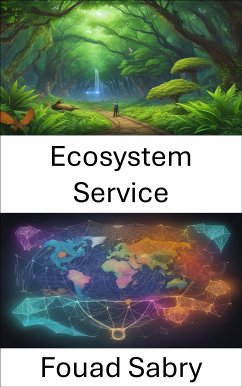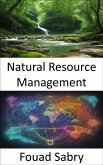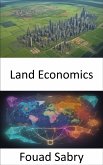What is Ecosystem Service
The term "ecosystem services" refers to the numerous and diverse advantages that are given to human beings by the natural environment and ecosystems that are in good condition. Agroecosystems, forest ecosystems, grassland ecosystems, and aquatic ecosystems are three examples of the types of ecosystems that fall into this category. As a result of their strong relationships, these ecosystems provide a variety of benefits to humans, including natural pollination of crops, clean air, protection from extreme weather, and mental and physical well-being. These advantages are increasingly being referred to as ecosystem services, and they frequently play an essential role in the production of food, the provision of clean drinking water, the breakdown of wastes, as well as the resilience and productivity of food ecosystems.
How you will benefit
(I) Insights, and validations about the following topics:
Chapter 1: Ecosystem service
Chapter 2: Ecology
Chapter 3: Ecosystem
Chapter 4: Biodiversity
Chapter 5: Natural capital
Chapter 6: Protected area
Chapter 7: Conservation biology
Chapter 8: Elasticity (economics)
Chapter 9: Habitat conservation
Chapter 10: Kelp forest
Chapter 11: Ecological engineering
Chapter 12: Habitat destruction
Chapter 13: Aquatic ecosystem
Chapter 14: Forest ecology
Chapter 15: Sustainable habitat
Chapter 16: Marine ecosystem
Chapter 17: Forest management
Chapter 18: Ecological resilience
Chapter 19: Payment for ecosystem services
Chapter 20: Nutrient cycle
Chapter 21: Nature-based solutions
(II) Answering the public top questions about ecosystem service.
(III) Real world examples for the usage of ecosystem service in many fields.
Who this book is for
Professionals, undergraduate and graduate students, enthusiasts, hobbyists, and those who want to go beyond basic knowledge or information for any kind of Ecosystem Service.
The term "ecosystem services" refers to the numerous and diverse advantages that are given to human beings by the natural environment and ecosystems that are in good condition. Agroecosystems, forest ecosystems, grassland ecosystems, and aquatic ecosystems are three examples of the types of ecosystems that fall into this category. As a result of their strong relationships, these ecosystems provide a variety of benefits to humans, including natural pollination of crops, clean air, protection from extreme weather, and mental and physical well-being. These advantages are increasingly being referred to as ecosystem services, and they frequently play an essential role in the production of food, the provision of clean drinking water, the breakdown of wastes, as well as the resilience and productivity of food ecosystems.
How you will benefit
(I) Insights, and validations about the following topics:
Chapter 1: Ecosystem service
Chapter 2: Ecology
Chapter 3: Ecosystem
Chapter 4: Biodiversity
Chapter 5: Natural capital
Chapter 6: Protected area
Chapter 7: Conservation biology
Chapter 8: Elasticity (economics)
Chapter 9: Habitat conservation
Chapter 10: Kelp forest
Chapter 11: Ecological engineering
Chapter 12: Habitat destruction
Chapter 13: Aquatic ecosystem
Chapter 14: Forest ecology
Chapter 15: Sustainable habitat
Chapter 16: Marine ecosystem
Chapter 17: Forest management
Chapter 18: Ecological resilience
Chapter 19: Payment for ecosystem services
Chapter 20: Nutrient cycle
Chapter 21: Nature-based solutions
(II) Answering the public top questions about ecosystem service.
(III) Real world examples for the usage of ecosystem service in many fields.
Who this book is for
Professionals, undergraduate and graduate students, enthusiasts, hobbyists, and those who want to go beyond basic knowledge or information for any kind of Ecosystem Service.
Dieser Download kann aus rechtlichen Gründen nur mit Rechnungsadresse in A, B, BG, CY, CZ, D, DK, EW, E, FIN, F, GR, H, IRL, I, LT, L, LR, M, NL, PL, P, R, S, SLO, SK ausgeliefert werden.









